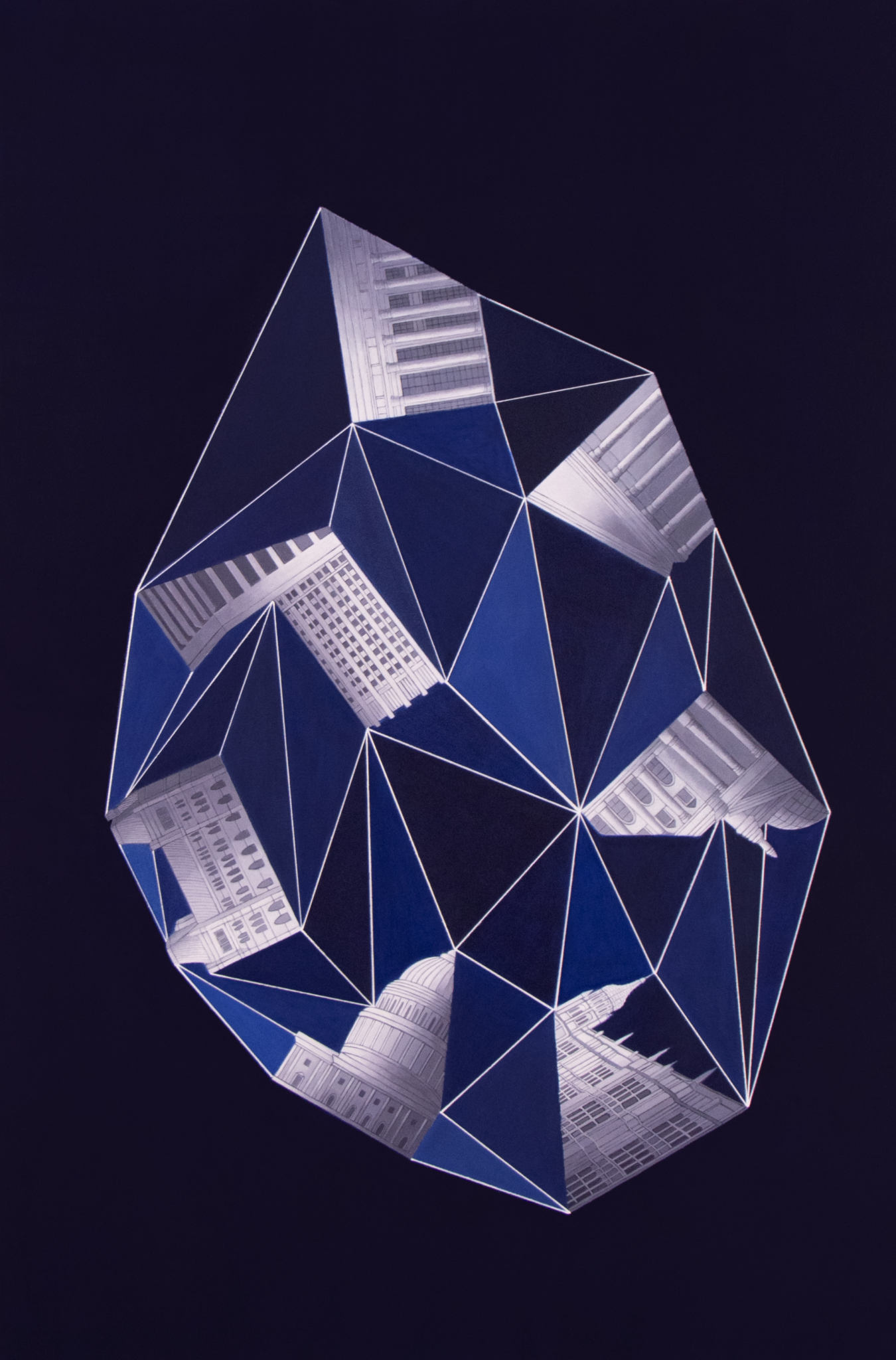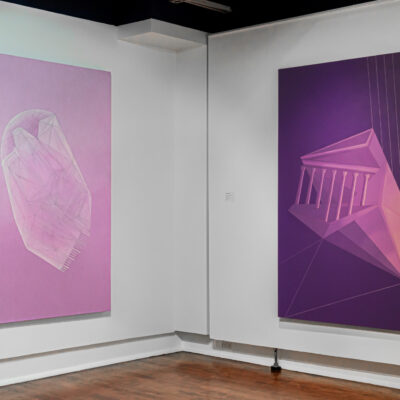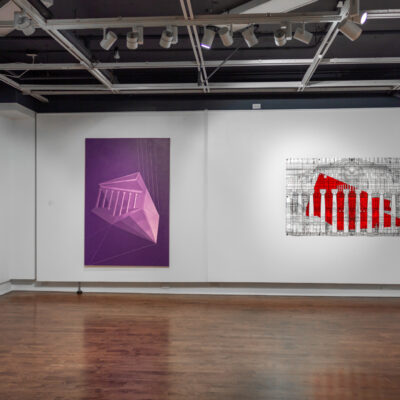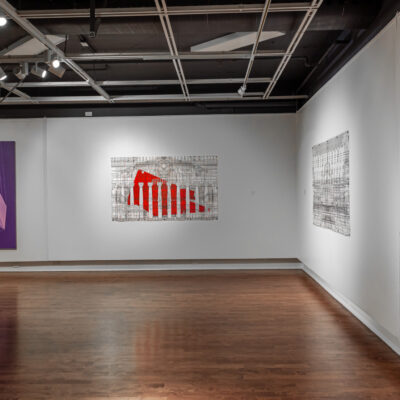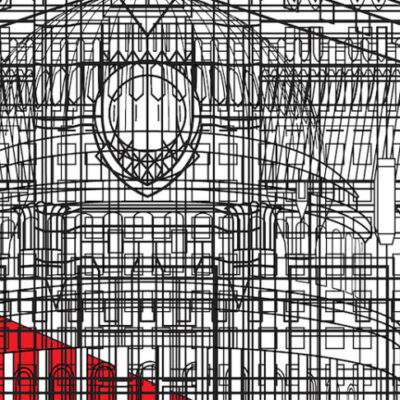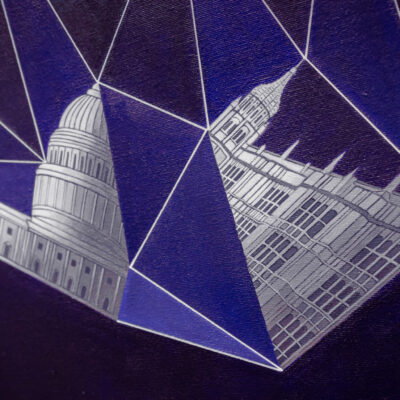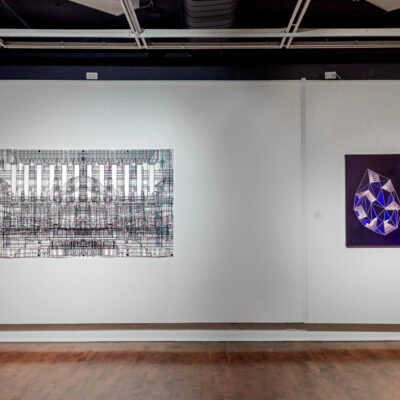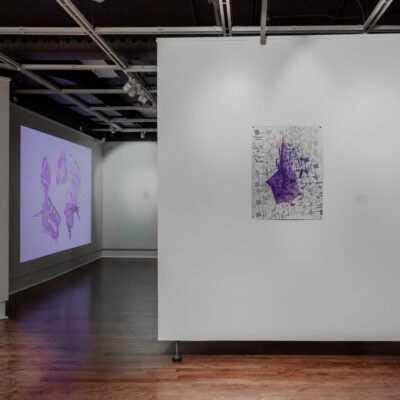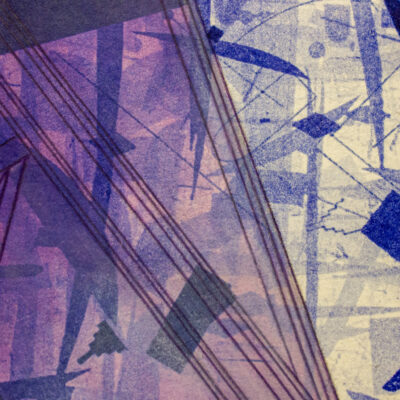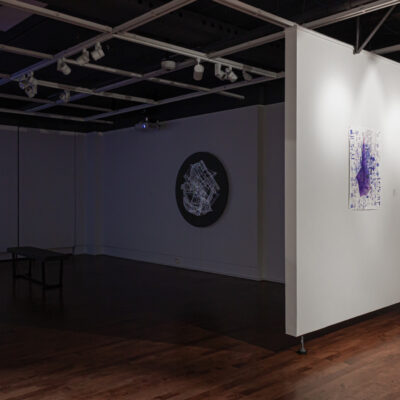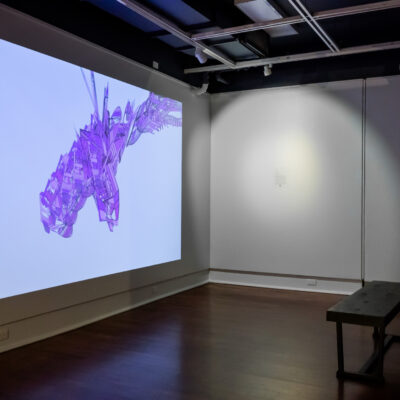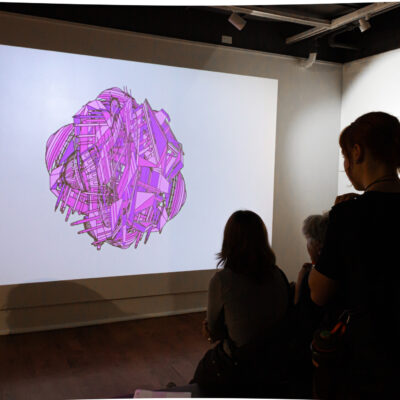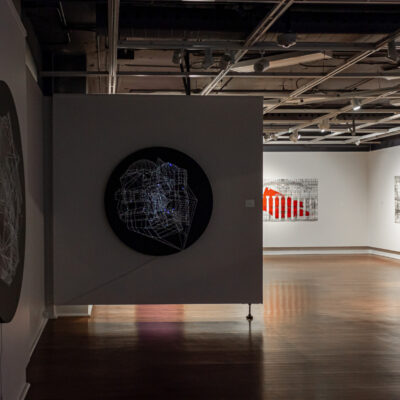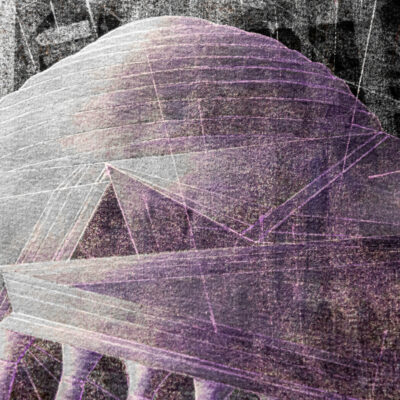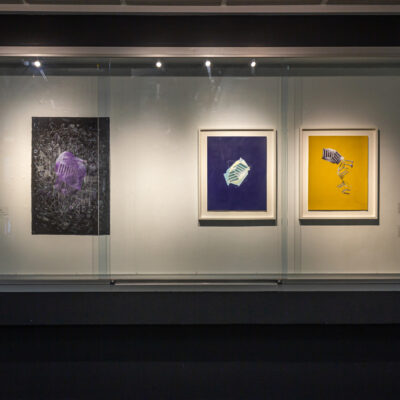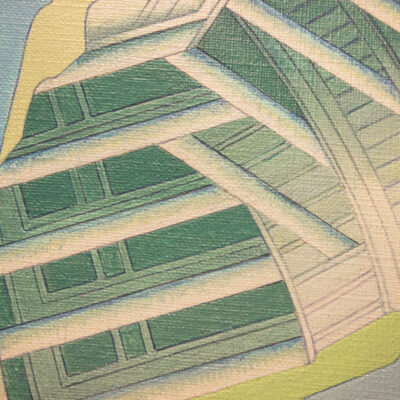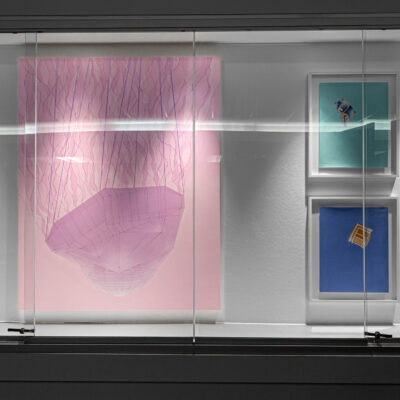Bahar Taheri: Oneness
Bahar Taheri approaches contemporary concerns through painting, video, and mixed-media installations. Through her practice, she has delved into aspects of gender, identity, collective memory, and historical events, the means through which our socio-political circumstances are shaped.
More recently, her work is subtly moving from figuration to geometric abstraction. In addition, Taheri has been deconstructing buildings; folding and unfolding monumental walls until binaries, absolutes and hierarchies dissolve into a reconstructed rupture from reality.
Her project, Oneness, depicts a utopian universe at the intersection of several countries, cultures, and beliefs. Manifesting a unity subsisting behind differences and divisions, Taheri presents structures without binarity, without absolutes and without hierarchy, the opposite of houses of parliament.
Biography
Bahar Taheri is an Iranian-Canadian visual artist based in Montreal. Born in Tehran in 1980, she received an MFA in painting (2009) from Tehran’s Soore Art University. Taheri has exhibited works in solo and group exhibitions in Iran, Canada, and across Europe, where she has also participated in residencies. She has been awarded grants from the Conseil des arts des lettres du Québec, Montreal Intercultural Arts, and the Montréal Arts Council. Her works are in the collection of the Montreal Museum of Fine Arts and several private collections. In 2019, The Montreal Museum of Fine Arts selected a work by Taheri to represent 20 years of their Sharing the Museum Program.
INTERVIEW WITH BAHAR TAHERI BY KATYA KIERAN
KK: Could you further elaborate on the meaning behind the title and subject of the exhibition?
BT: “Oneness” is based on the symbolic fragments of eight houses of parliament (China, Russia, Germany, Great Britain, France, United States, Canada, and Iran) coming together to become one structure. It’s about the visual unification of different places and countries through the parliaments that represent them.
KK: In terms of the installation of the works in the gallery space, how did you decide where each piece was arranged?
BT: Rhonda and I decided together how to arrange the pieces. I knew from the beginning I wanted to pair my two digital works together, so it often had to do with the medium. Aside from that, the technical aspect needed to be considered as well. The video piece and the pair of tondos needed to be exhibited in a place with as little light as possible, which is why we placed them in the adjacent room. Because these artworks are visually and conceptually are linked, it was mainly a combination of aesthetic and technical decisions.
KK: How does colour play a role in the significance of your work and the message you want to express?
BT: I chose black for the canvases of my mixed media works, because the darkness plays as a contrast with the white lights. In my paintings, purple is the color of power and royalty, contrasting well with black and silver. The red colour in one of my digital prints represents blood and violence and highlights the Iran’s parliament. I chose this colour to comment on the people who have lost their lives simply for expressing their ideas.
KK: How do you plan out the abstractions and arrangements? Could you tell us a little bit about what the process is like?
BT: My two digital prints are whole contour drawings, overlayed. For my paintings, I take pieces from each parliament, resulting in fragmentation. It’s like building with Lego blocks; deconstructing and reassembling new structures. It’s possible for the viewer to recognize certain parts of a building, but the new structure cannot be recognized. The hints of neoclassical architecture, a shared trait typical style of houses of parliament, unites the fragmented parts.
KK: How exactly did you make the circular Mixed Media pieces?
BT: Both are silkscreen prints, however, one of them came out off-centered. I decided to rework that print by hand-painting in acrylic, which came out well. Each one is a raw canvas that I had to have custom made in order to allow space behind it for the LED lights. Initially, I pricked pinholes through the canvas only at the intersecting lines as a metaphor for the intersection of beliefs represented by the structures. However, in the off-center one I decided to go further and add pinholes along the lines and let more light pass through, as I felt it was missing something. As such, similar though they are, both artworks are slightly different. Ideally these would be exhibited in a room with very minimal lighting. In total darkness the linework disappears, with too much natural light the LEDs don’t sparkle as much.
KK: Is there significance to the music chosen? Where is it from?
BT: The idea for the music came halfway through the process of working on the video piece. I worked with Dominic Marion, a musician and composer, I suggested that we use the same strategy of deconstruction and fragmentation as for the artworks. Based on eight national anthems, and with a variety of instruments mainly featuring electric guitar, Dominic chose and wove fragments together. He also came up with the idea to use the unofficial Iranian anthem from before the revolution, rather than the current one. Much like the paintings, it’s possible for the listener to recognize some notes or a melody, but overall the composition sounds almost abstract and is unrecognizable; as such it connects with the other works on a conceptual level.
KK: Do you have a preference for digital, acrylic or mixed media? What difference do you think they make in your art?
BT: Each of the mediums have their own capacity to express part of my concept. This is the first time I am showing digital prints as finished products, which I found interesting as I typically only use them as preparatory tools. My main medium is painting so as such, I have a deep love for it and am very familiar with the medium. The video was very interesting, conceptually, but it took so long. It was created during the Covid pandemic, so it was quite difficult to communicate. We couldn’t meet up and everyone was frustrated because we could only communicate online. All that in mind, my favorite pieces in this exhibit are the pair of tondos. Despite how time-consuming and costly they were to make, they are aesthetically, technically, and conceptually strong.

